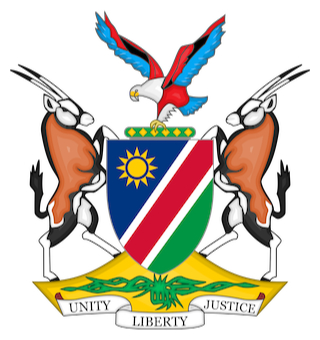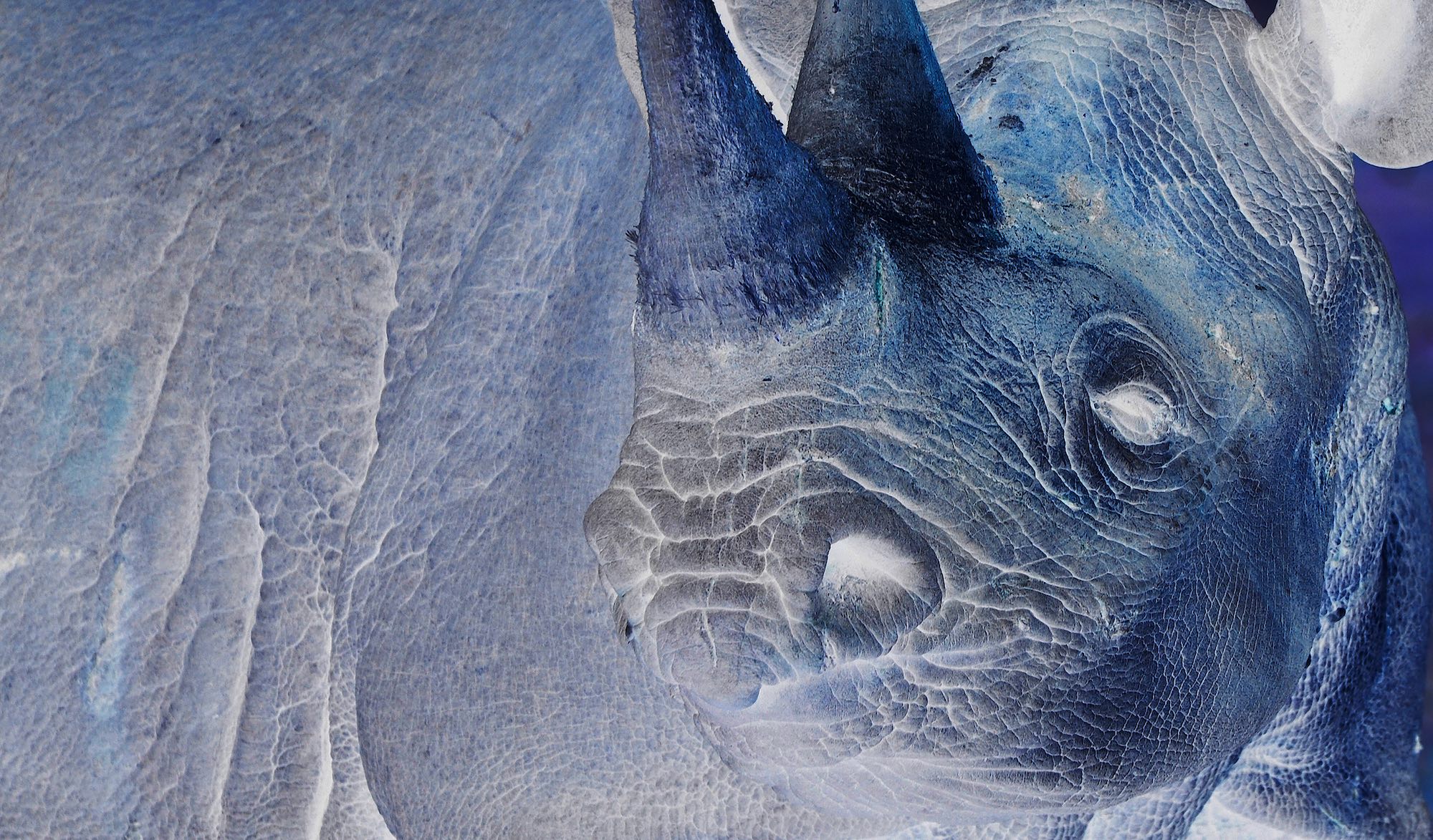

There is always somebody somewhere willing to poach; there is always some animal in some place vulnerable; if there is a market*, someone will try to supply it (*a market being an opportunity to make money).
Criminals adapt when things get difficult. An increasing range of species is targeted; new areas are constantly sought; intricate criminal syndicates operate across borders and the globe.
Combatting wildlife crime is extremely difficult and complex. Wildlife crime is an economic crime. No cure-all solutions exist.
When government, NGOs, the private sector and civil society work together at local, regional and global levels to enforce the law, wildlife crime becomes risky to the point of dissuading criminals and impacts can be reduced to levels that no longer threaten species.
Partnerships are at the forefront of combatting wildlife crime
SIX KEY INGREDIENTS TO COMBAT WILDLIFE CRIME IN NAMIBIA
- Strong partnership networks.
- Strategic planning and innovative action.
- Use of all available technologies & tools.
- Active sharing of information and other resources.
- Fast and flexible funding.
- Ongoing adaptation to changing threats and needs.
ORGANISATIONS COLLABORATING IN NAMIBIA:
- Namibian government
- Anti-Corruption Commission – ACC.
- Financial Intelligence Centre – FIC.
- Ministry of Defence – MD.
- Namibian Defence Force – NDF.
- Namibian Army
- Ministry of Environment & Tourism – MET.
- Wildlife Protection Services Unit – WPSU.
- Intelligence & Investigations Unit – IIU.
- Game Products Trust Fund – GPTF.
- Ministry of Finance – MF.
- Directorate Customs & Excise.
- Ministry of Home Affairs & Immigration – MHAI.
- Ministry of Justice – MJ.
- Ministry of Safety & Security – MSS.
- Namibian Police Force – Nampol.
- Protected Resources Division – PRD.
- Serious Crime Unit – SCU.
- Special Field Force – SFF.
- Office of the Attorney-General – AG.
- Office of the Prosecutor-General – PG.
- International linkages
- Governments of Angola, Botswana, South Africa, Zambia & Zimbabwe.
- International Consortium on Combatting Wildlife Crime – ICCWC.
- Convention on International Trade in Endangered Species of Wild Fauna & Flora – CITES Interpol.
- United Nations Office on Drugs & Crime – UNODC.
- World Bank Group – WBG.
- World Customs Organisation – WCO.
- Rural communities
- Communal conservancies.
- Communal farmers.
- Freehold conservancies.
- Freehold farmers.
- Rhino custodians.
- Non-Government Organisations
- Integrated Rural Development & Nature Conservation – IRDNC.
- Intelligence Support Against Poaching – ISAP.
- Legal Assistance Centre – LAC.
- Namibia Nature Foundation – NNF.
- Rooikat Trust.
- Save the RhinoTrust – SRT.
- WWF in Namibia.
- Umbrella organisations
- Namibian Association of CBNRM Support Organisations – NACSO.
- Namibian Chamber of Environment – NCE.
- Industry
- Business community.
- Mining industry.
- Tourism & conservation-hunting industries.
- International funding agencies
- Bureau of International Narcotics & Law Enforcement Affairs, USA – INL.
- Global Environment Facility – GEF.
- Kreditanstalt für Wiederaufbau – KfW.
- United States Agency for International Development – USAID.
- Wildcat Foundation.
- WWF.
Namibia country brief

A history of restoration – countering a legacy of decimation
Since independence, Namibia has actively nurtured a culture of collaboration, especially in the conservation sector. This has enabled environmental restoration and wide scale wildlife recoveries – countering a colonial legacy of decimation. The systems are not perfect. Conservation efforts can still be strengthened and law enforcement improved. Some natural resource sectors still require urgent attention (e.g. forestry, fisheries).
- Pre-Independence
- Decimation of large wildlife in 1700s & 1800s.
- White rhino locally extinct in Namibia before 1900 (reduced to < 50 animals in South Africa by 1895).
- Black rhino reduced to remote, isolated populations.
- Elephant reduced to remote, isolated populations.
- Large predators reduced to remote, isolated populations.
- Apartheid isolated Namibia & South Africa from the international community.
- Homeland policies isolated communities.
- Very limited economic development in homelands.
- No access to or benefits from wildlife.
- No incentives to conserve natural resources.
- No input into conservation decisions.
- Growth of government conservation structures & expansion of protected areas from 1950s, leading to recovery of rare species in parks.
- Rights over wildlife for freehold farmers in 1960s, leading to recovery of wildlife on freehold land.
- Rampant poaching for ivory & rhino horn in 1970s & ‘80s (with South African apartheid military involvement).
- Start of community game guard system to combat poaching in 1980s.
- Post-Independence
- Biodiversity conservation & sustainable use entrenched in constitution of Namibia.
- Inclusive conservation legislation in mid-1990s.
- Rights over wildlife for communal farmers through formation of communal conservancies in mid-1990s, leading to recovery of wildlife on communal land.
- Targeted rebuilding of wildlife populations through government–NGO–community partnerships.
- Reintroduction of white rhino to state parks & freehold land (private ownership possible).
- Growth & range expansion of black rhino through Rhino Custodianship Scheme (government retains ownership).
- Natural growth & range expansion of elephant (± 7,000 in 1995 to > 20,000 today).
- Natural growth & range expansion of lion.
- Rebuilding of populations of most historically occurring species in national parks, on freehold & communal land.
- Viable populations of almost all historically occurring large mammals.
The widespread conservation successes since independence were enabled through strong partnerships between government, international funding agencies, local NGOs, tourism & conservation-hunting industries & rural communities.

An ancient practice with a modern edge
The trade in ivory, rhino horn and other wildlife products is an ancient practice, with a modern criminal edge.Wildlife products are not new commodities (although new uses are being promoted, especially in food and medicine).Through international treaties and national legislation, a clear distinction has been made between legal wildlife use and wildlife crime. Combatting wildlife crime is a fight against ancient markets and entrenched supply chains – now with huge illicit profits.
- Rhino and elephant poaching in Africa...
- Rhino poaching rampant across Africa from 1970s.
- Reduction of black rhino population from ± 100,000 in 1960 to ± 2,500 in 1995.
- Angola, Botswana & Zambia rhinos reduced to remnant populations, Zimbabwe rhino severely impacted.
- South Africa & Namibia initially little affected, enabling significant rebuilding of populations in these countries over past three decades.
- South Africa targeted from 2007.
- Namibia targeted from 2012.
- Elephant poaching rampant across Africa in 1970s & 80s.
- Some population recoveries in 1990s.
- Renewed poaching onslaught since 2005.
- Continental population estimates prior to 1990 patchy, but show rapid decline.
- Southern African populations healthy & increasing in recent decades.
- Continental population estimated to have decreased by up to 30% in last decade.
Southern Africa and Namibia have clearly become targets since poaching in other areas has become less profitable.
- ... and poaching in Namibia
- Rampant poaching of elephant & black rhino in 1970s & ‘80s with South African (apartheid) military involvement.
- Start of community conservation programme in 1980s.
- Active rebuilding of most wildlife populations over past three decades, including elephant, rhinos, lion, leopard, cheetah, hyaenas, giraffe, antelopes, crocodile.
- Commercial poaching reduced to negligible levels after independence.
- Namibia increasingly targeted by poaching syndicates from 2012.
- Rapid escalation of rhino & elephant poaching.
- Increasing poaching/trafficking of other species.
- Namibian pangolin poaching recognized as major problem from 2014 (pangolin believed to be most trafficked wild animal in the world); current status of Namibian pangolin population uncertain.
- Lion, leopard & cheetah targeted (regular confiscation of skins).
- Reptiles, esp. crocodile, snakes & tortoises targeted.
- Birds & bird’s eggs targeted (e.g. carmine bee-eaters at colonies).
- Indigenous/endemic plants targeted for both live trade & timber.
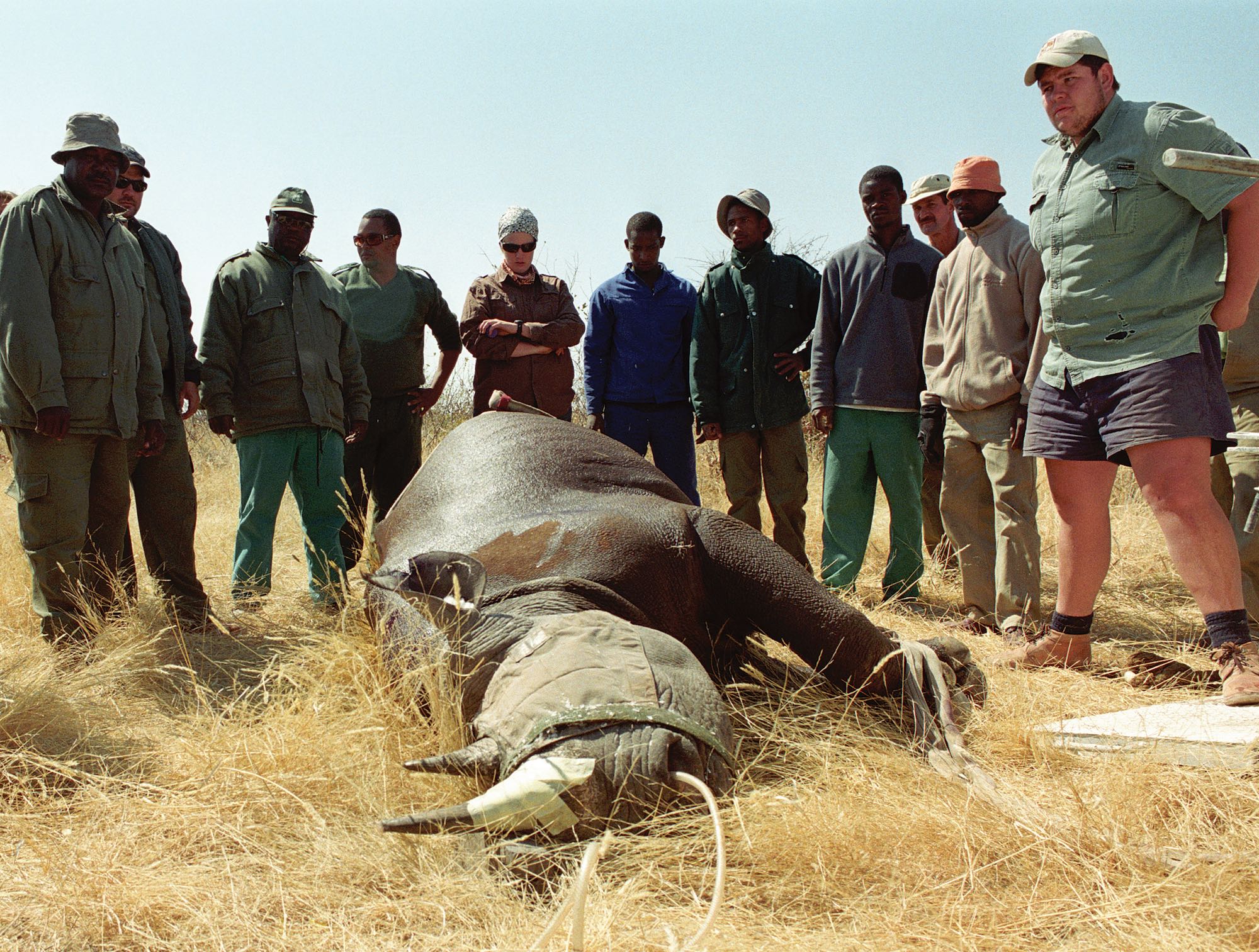
A timeline of mobilisation
- 2010
- + First rhino poaching awareness meetings in response to poaching increase in South Africa.
- 2011
- + Rhino Ranger Incentive Programme to appoint & train local rhino rangers initiated in Erongo– Kunene by SRT, IRDNC, NNF & Minnesota Zoo.
- 2012
- + First rhino & elephant poaching cases in Namibia; initial disjointed efforts by private sector, NGOs & government.
- 2012-18
- + Various civil society initiatives including ISAP, some with limited stakeholder engagement & mixed results.
- 2013-15
- + Exploration of technical measures, information networks & innovative actions to counter wildlife crime by MET & NGOs with Google funding.
- 2014-17
- + Waterberg Law Enforcement & Training Centre established & various technical support provided through MET’s GEF funded PASS project.
- 2015
- + Discovery of high number of rhino carcasses in Etosha, some dating back a year or more.
- + MET urges NGOs & civil society to collaborate to coordinate anti-poaching efforts.
- 2015-18
- + Numerous public demonstrations & awareness campaigns to highlight plight of rhinos.
- 2016
- + Deployment of Nampol SFF & NDF in Etosha & northeastern parks to support rare species protection.
- + Development of MET law enforcement strategy in consultation with NGOs.
- + Cabinet creates National Wildlife Security Committee (9 ministries represented).
- + WWF secures funding (3 yrs) to support various rhino conservation & security activities & create NGO Support Structure (NGOSS) to serve MET & conservation NGOs.
- 2016
- + NGOSS established & specialist staff employed.
- + National needs assessment under taken, resulting in INL funding (2 yrs) to support government & NGO activities to combat wildlife crime.
- + MET helicopter purchased through private funding.
- + Cellebrite digital forensics technology secured.
- + Kunene Rhino Pride Campaign initiated in Erongo– Kunene by SRT, IRDNC & Minnesota Zoo to engage with rural communities.
- 2016-17
- + MET Wildlife Protection Services Unit & Intelligence & Investigations Unit created & staffed.
- 2017
- + USAID Combatting Wildlife Crime Project initiated, focussing on KAZA & Namibia (5 yrs).
- + WWF, NNF & LAC partner to support investigations & prosecutions with INL-2 funding.
- + NCE initiates pangolin reward scheme
- + Change in national wildlife laws to significantly increase penalties for serious wildlife crimes.
- + Rooikat Trust established to support investigations & prosecutions with funding from Wildcat Foundation.
- 2018
- + Operation Blue Rhino initiated, formalising collaboration between Nampol PRD & SCU & MET IIU, endorsed by Nampol Inspector General, with dedicated staff seconded to operations, with suppor t from NDF & FIC.
- + NNF & SRT, WWF & Rooikat support anti-poaching, investigations & prosecutions with INL-3 funding.
- + Rooikat Trust supports dedicated state prosecutors for wildlife crime cases with funding from Wildcat Foundation.
- + Patrol effort of Erongo–Kunene Rhino Rangers & partners increased to 1,200% of 2012 levels, when poaching began (no cases recorded in area in 2018).
A complex juggling act of collaboration
Conservation of rare and valuable species, such as pangolin, rhino and elephant, is a juggling act, easily upset by the impacts of wildlife crime. These species are already affected by habitat fragmentation, indiscriminate killing (pangolin), human–wildlife conflict (elephant) and international pressures inhibiting their conservation value (rhinos and elephant). Reduced conservation rewards increase the difficulties of anti-poaching efforts. By ensuring broad awareness of the complexity of conservation and law enforcement, linkages and partnerships are strengthened and the juggling act can be turned into a stable structure that ensures healthy wildlife populations – and healthy livelihoods.

The sharp teeth of strategic interventions
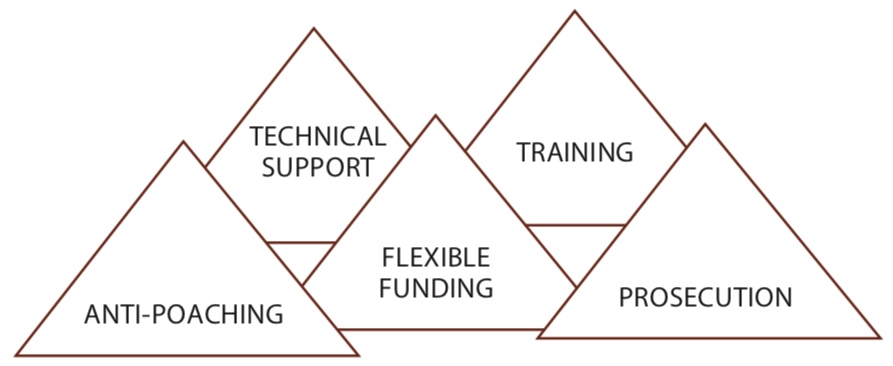
- Building the foundations
- Decades of community-based conservation result in significant community benefits, pride & trust.
- Decades of strengthening conservation partnerships, result in sound conservation systems.
- Sustainable use strengthens the value of wildlife.
- Active rebuilding of wildlife populations results in healthy populations of historically occurring species.
- Countering the crisis
- Full government commitment with NGO, CBO, private sector & civil society support.
- Evaluation of threats & needs.
- Creation of linkages & partnerships.
- Rapid increase in targeted law-enforcement efforts.
- Short-term funding solutions through collaboration between government, NGOs, private sector & international funding agencies.
- Awareness creation amongst judiciary of seriousness & impacts of wildlife crime.
- Awareness creation amongst rural communities of livelihood impacts of wildlife crime.
- Use of all available technologies.
- Flexible funding immediately available for inter ventions.
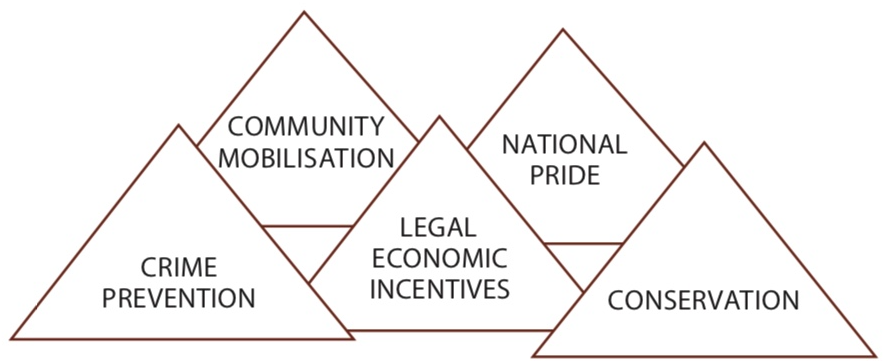
- Consolidating partnerships and systems
- Strengthening of partnerships between government, NGOs, CBOs, private sector & rural communities.
- Active collaboration between all relevant agencies within government.
- Long-term partnerships with funding agencies.
- Active collaboration between field staff & rural communities.
- Strong support from rural communities (information).
- Active collaboration between law enforcement & judiciary (strong prosecution cases).
- Broad public support (awareness, public pressure, funding).
- Identification & addressing of clear funding targets, training & equipment needs & gaps.
- Increasingly effective investigations, law enforcement & prosecutions resulting in appropriate penalties.
- Parallel conservation & law enforcement efforts.
- Expanding international linkages
- Increasing law-enforcement collaboration with neighbouring countries.
- Strengthening of all international conservation & law enforcement linkages.

Namibia’s many-tiered collaboration for cross-cutting results
FUNDING SUPPORT
FUNDING
FUNDING SUPPORT
DIRECTORATE CUSTOMS & EXCISE
NAMIBIAN POLICE FORCE
PRD CID
DIRECTORATE PARKS & WILDLIFE
WPSU IIU
NAMIBIAN DEFENCE FORCE
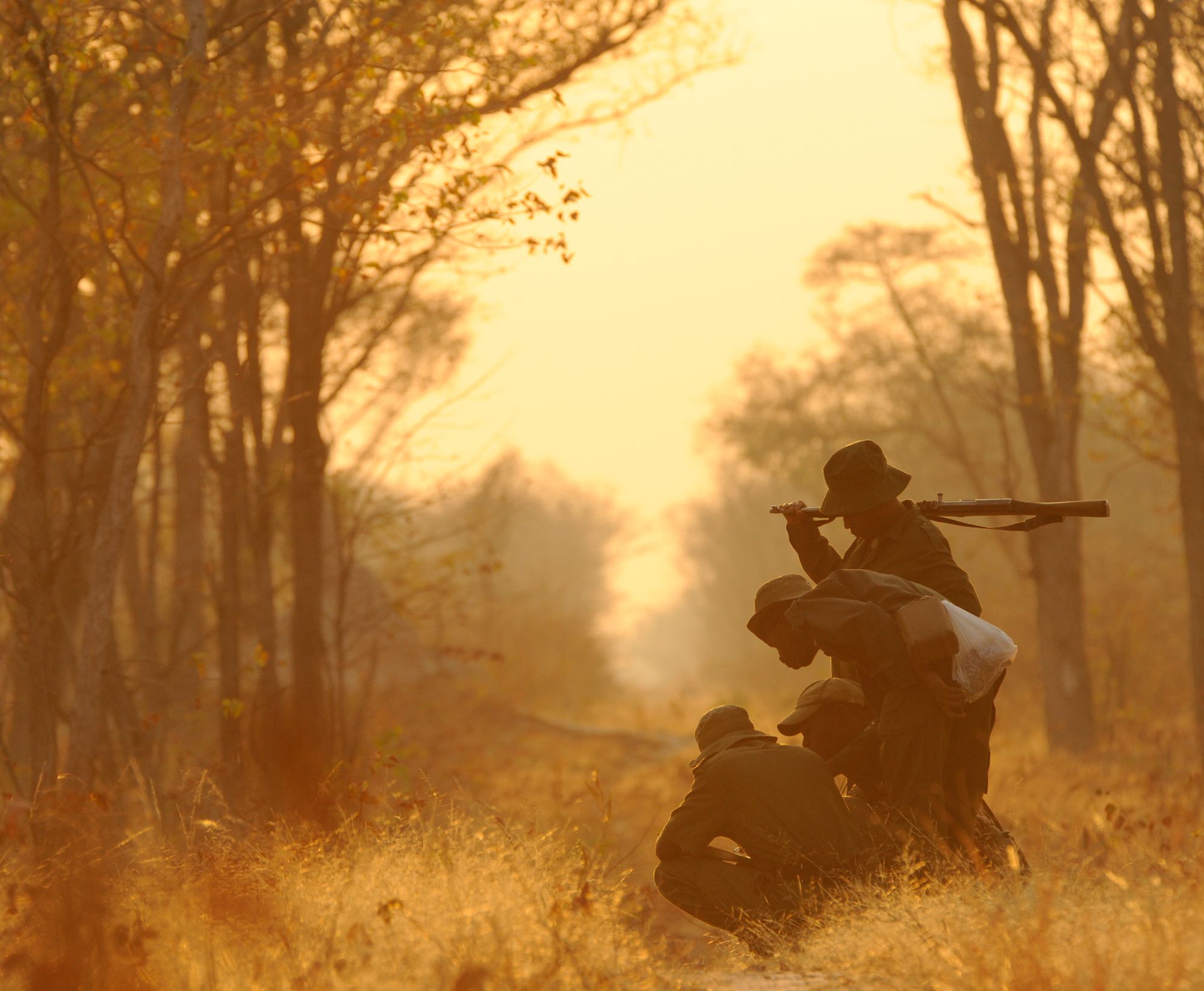
Namibian partnerships keys
SIX KEYS TO UNLOCKING PARTNERSHIPS IN NAMIBIA
- Comprehensive government engagement.
- Full acknowledgement of the contribution of all stakeholders.
- Cascading personal trust from funding agency directors to field personnel.
- Clear roles and responsibilities at all levels.
- Active sharing of information and other resources.
- Flexible funding and minimal red tape.
-
PARTNERSHIPS ARE ABOUT RECOGNITION, FLEXIBILITY AND TRUST
- Recognising the individual
- Clear delegation of personal responsibility.
- Respect for the role of each person.
- Acknowledgement of the value of each contribution.
- Due rewards for effort & risk.
- Clear, acknowledged roles of all stakeholders
- Recognition of defined roles at both individual & organisational levels.
- Recognition of importance of transboundary collaboration.
- Recognition of importance of international linkages.
- Acknowledgement of the value of each contribution.
- Formalised collaboration
- Full support to the mandate of government to act as the primary law enforcement entity.
- Acknowledged collaboration between all conservation & law enforcement entities.
- Formalised regional collaboration.
- Formalised international collaboration.
- Flexible funding
- Minimal restrictions on use of funds.
- Immediate mobilisation of funds for action or reward, directly to field operation level.
- Healthy mix of funding between government, international & local funds.
- Clear overall funding structure that coordinates funding sources & targets & identifies gaps.
- Awareness, training and technical support
- Pride in both conservation & collaboration.
- Clear understanding of aims.
- Clear understanding of capacity & funding needs.
- Timeous addressing of capacity or funding gaps.
- TRUST
- Trust in the integrity & competence of the individual.
- Trust in the integrity & competence of each institution.
- Trust in the suitability of strategies & actions.
- Trust in the strength of partnerships.
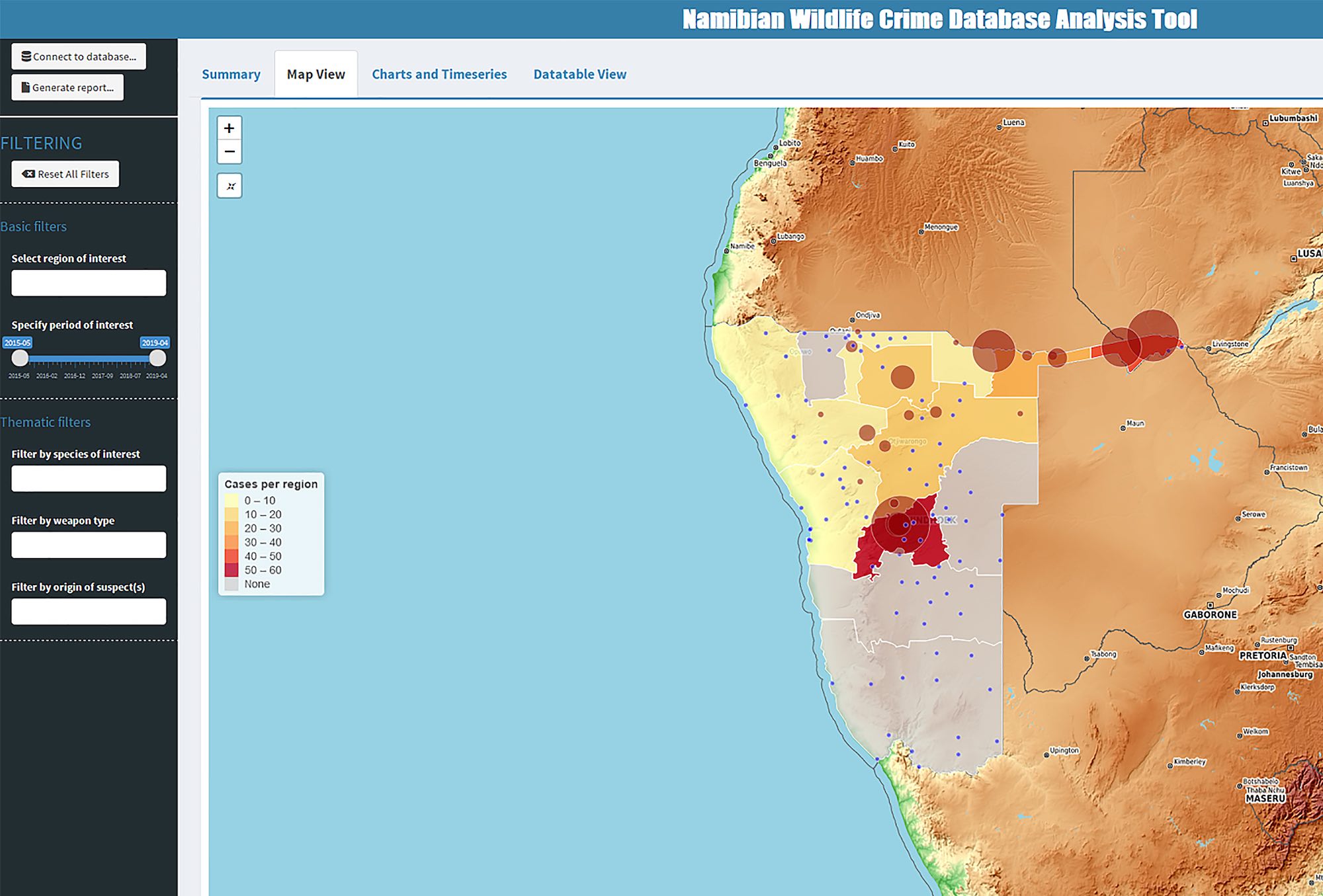
... and how they are being used in Namibia

The overall objective is to ensure healthy wildlife populations through effective conservation and law enforcement
- Field information
- Monitoring & surveillance.
- Anonymous community reporting.
- Investigation information.
- Forensics
- Crime scene analysis.
- DNA analysis.
- Digital intelligence.
- Financial intelligence.
- Monitoring, analysis and planning tools
- UNODC Wildlife & Forest Crime Analytic Toolkit.
- Namibian Wildlife Crime Database Analysis Tool (interactive mapping, identification of patterns, hotspots).
- Crime prediction & response.
- Strategic and flexible funding
- Funding Control & Management Tool.
- Wildlife Crimes Budget Manager.
- Direct field funding mechanisms.
- Reduced crime rewards and appropriate penalties
- Appropriate fines & prison sentences.
- Refusal of bail whenever possible.
- Blocking of local markets & international routes.
- Conservation incentives
- Conducive legislation to motivate conservation.
- Market incentives for wildlife management.
- Technical support structures.
- Targeted training
- Waterberg Law Enforcement & Training Centre.
- Field training & national workshops.
- International training & exchange.
- General awareness creation
- Conservation & law enforcement awareness of threats.
- Rural community pride & involvement.
- Awareness of the distinction between wildlife crime and legal wildlife use.
- General public awareness & support.
Some Namibian statistics...
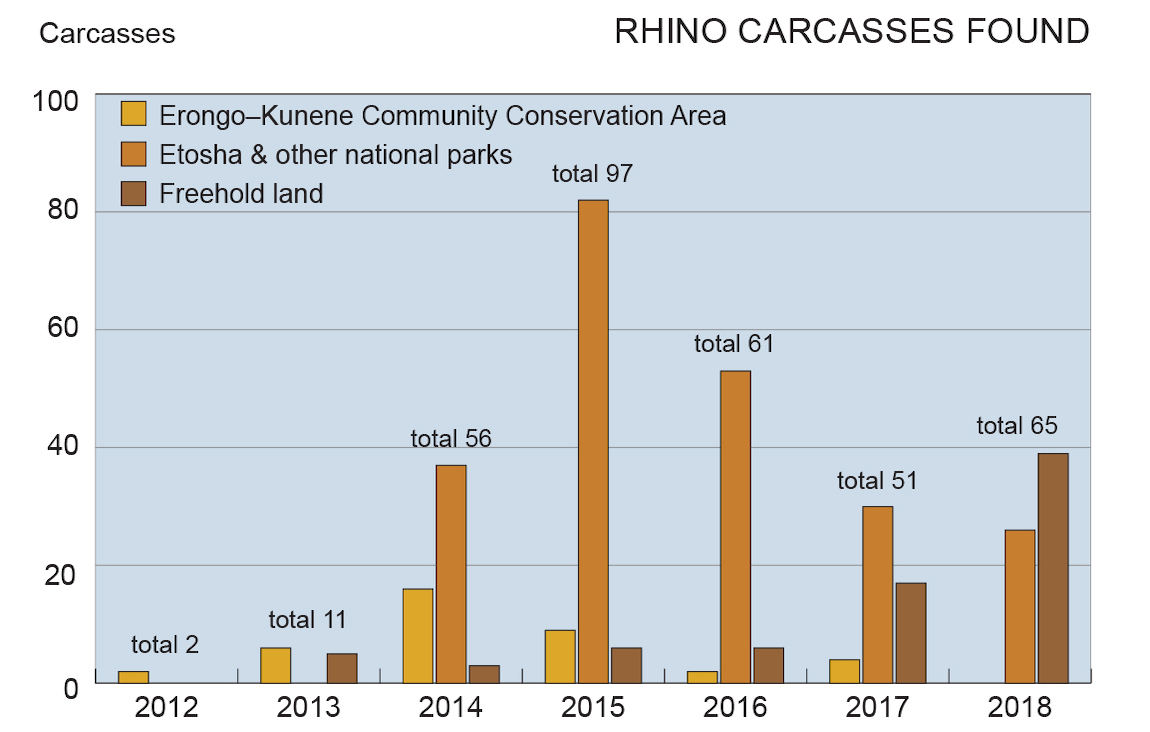
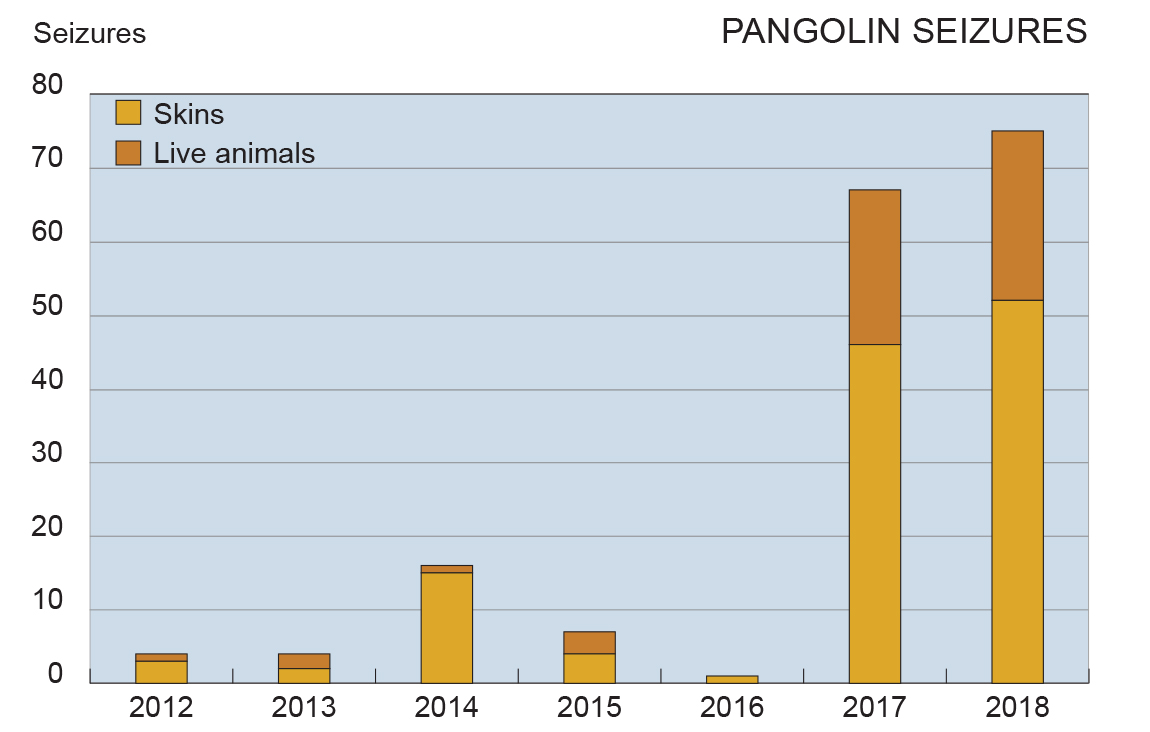

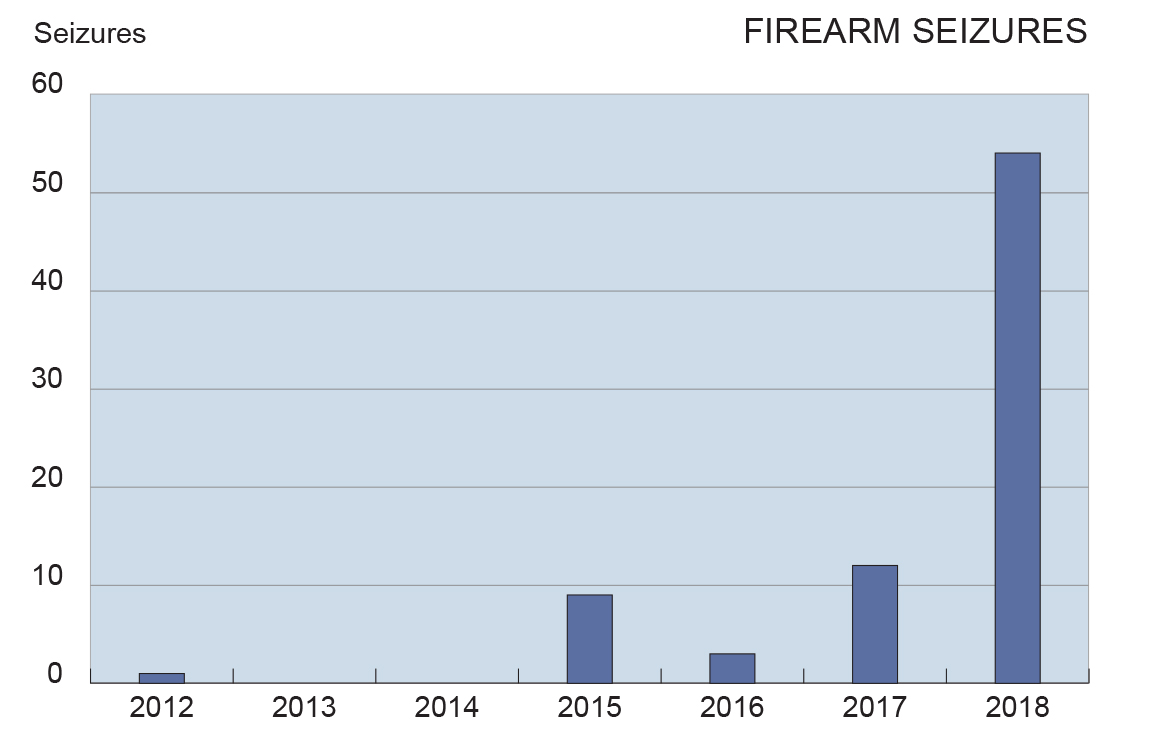
... and what they show
- RHINO POACHING
- Once poaching began, rapid escalation occurred, indicating initially easy targets.
- Establishment of strong partnerships & systems enabled increasingly effective responses.
- Coordinated effort clearly reduced impacts, first in Erongo–Kunene, then Etosha (Etosha has the highest number of rhinos in Namibia & will always be a target).
- Impacts have shifted to easier targets elsewhere.
- Impacts on freehold land are now showing a rapid increase & need immediate attention.
- Overall impacts have remained high at 50 or more animals over the last five years.
- ARRESTS
- The 2015 increase in arrests is related to the discovery of rampant rhino poaching in Etosha.
- The establishment of dedicated operations units & coordinated law enforcement efforts clearly show results from 2017 onwards.
- Arrest often include the seizure of illicit items, especially ivory, rhino horn & weapons; it is not always easy to confirm the origin of these, making the analysis of ivory & rhino horn data very complex.
- PANGOLIN TRAFFICKING
- Increased pangolin trafficking (live & skins) was recognised from 2014, but initially difficult to counter.
- A targeted awareness campaign & reward scheme for information leading to arrests shows impressive results from its inception in 2017.
- A system of monitoring & releasing recovered live pangolins is in place.
- Other wildlife products (especially predator skins) are often being seized during pangolin operations, indicating an increasing threat to other species.
- FIREARM SEIZURES
- The establishment of Operation Blue Rhino & increased law enforcement efforts clearly show results.
- Other weapons, vehicles, tools & other items (knives, machetes, hacksaws etc.) are also being seized.
Notes
Statistics of poaching impacts are particularly difficult to represent, as not all cases are recorded, or there may be a significant time lag between a poaching event and its discovery (sometimes of years).
Arrests and seizures can indicate an increase in law enforcement, an increase in criminal activity, or a combination of both.
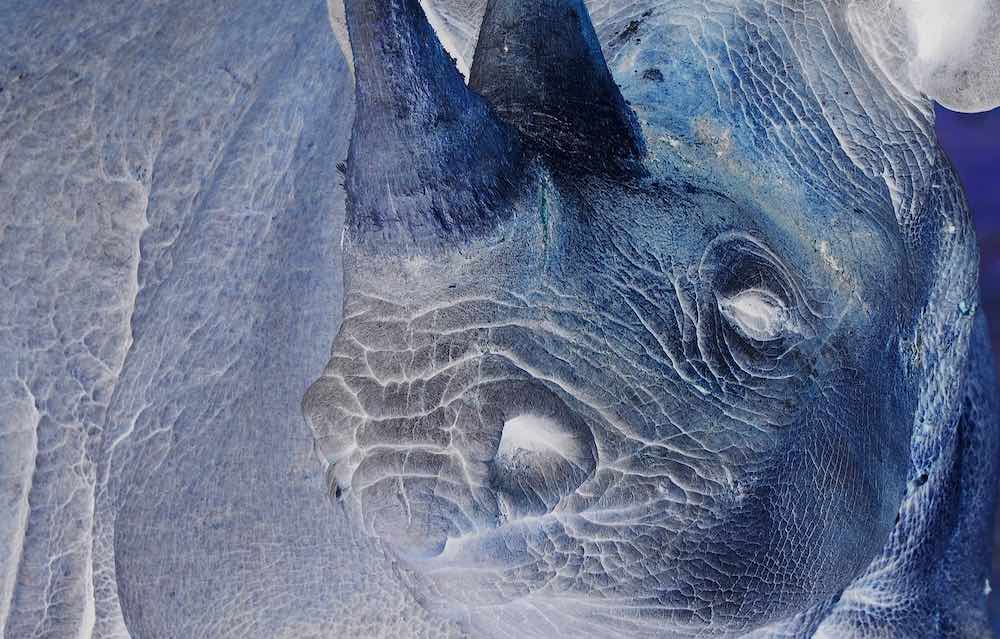
Some identified needs, opportunities and threats
History shows a grim picture of leapfrogging decimation, intervention and rebuilding of populations – followed by renewed decimation in ever-diminishing cycles. Conservation, law enforcement and crime prevention need to become much more innovative, effective and deeply entrenched to ensure the safeguarding of biodiversity in a rapidly changing world.
- Understand evolving crime
- Crime methods are continually & rapidly evolving.
- Crime focus always shifts to areas of least resistance.
- While many markets are culturally entrenched, new markets are also being established.
- Wildlife crime must be recognised as an economic crime.
- Motivate conservation efforts
- Balance the high cost & risk of conservation with more diverse rewards, especially outside parks.
- Maximise the economic, social & cultural values of wildlife.
- Highlight the distinction between legal and illegal wildlife use.
- Strengthen national sense of pride & environmental identity.
- Improve crime prevention
- Improve pre-emptive action that intercepts criminals before losses occur.
- Expand & integrate the use of all available technologies.
- Improve data collection & analysis & share information more actively to enable more proactive interventions.
- Expand collaboration to other sectors
- Improve private sector protection of valuable species through increased collaboration.
- Expand law enforcement effectiveness across all Namibian environmental sectors (e.g. forestry, fisheries) to safeguard habitats & improve overall environmental health.
- Target local linkages with other crime sectors (drugs, money laundering etc.).
- Increase international collaboration
- Increase impacts higher up the crime chain (traffic routes, end markets) through international collaboration.
- Target international linkages with other crime sectors (drugs, money laundering etc.).
- Use the legislation of the Prevention of Organised Crime Act more effectively.
- Ensure that conservation & law enforcement partnerships reach from wildlife in its environment to the destination countries & end markets.
We need to reduce the funds & effort spent on combatting wildlife crime and free these for conservation and human development.
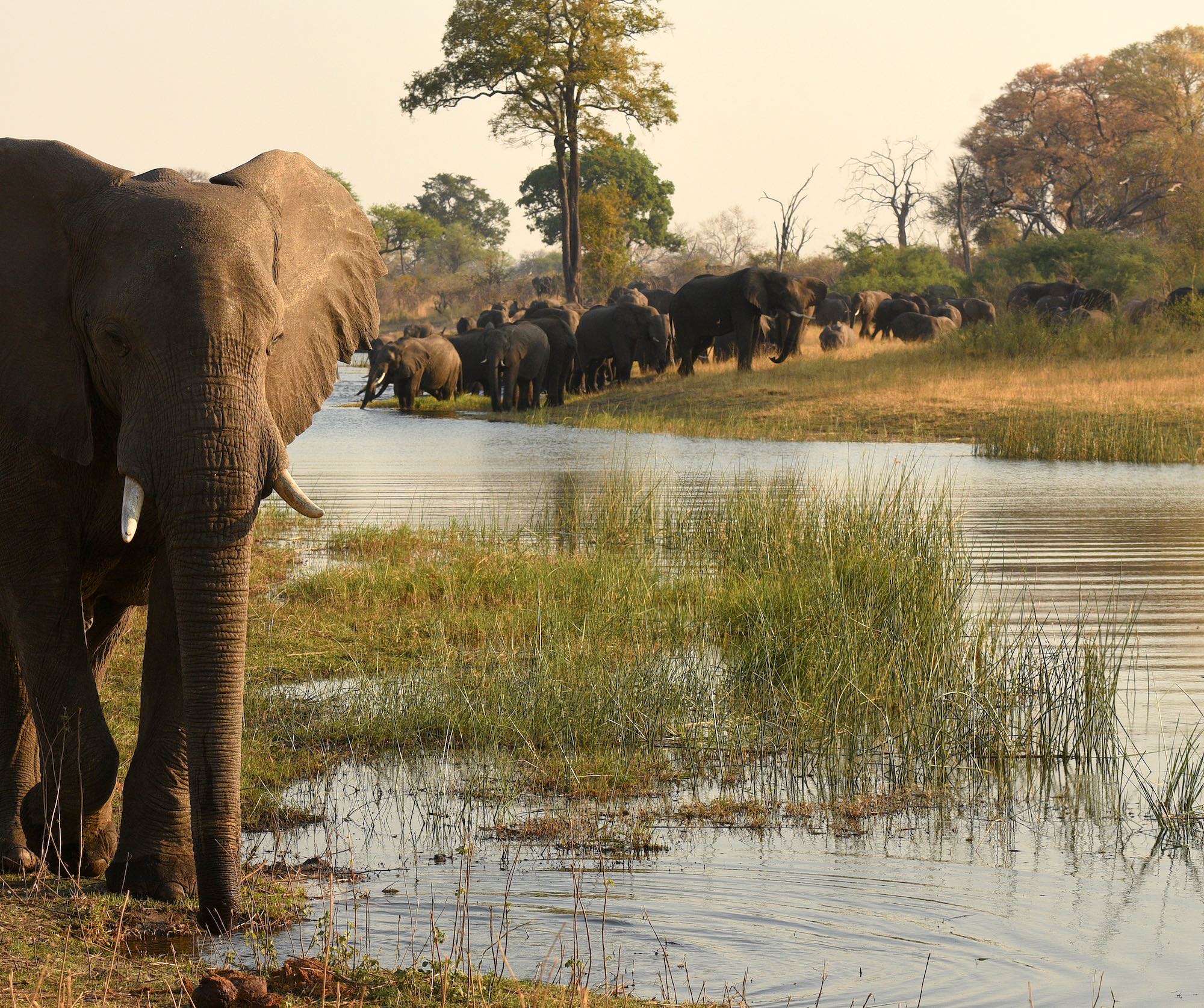
... and what options are there for additional action and support?
WE NEED PARTNERSHIPS BECAUSE...
- Criminals have an edge
- They can act without rules & regulations.
- They strike quickly when its suits them (at night, on public holidays etc.).
- They get direct, individual rewards for their efforts.
- They can operate beyond all boundaries.
- They can get rich quickly.
- Authorities can be cumbersome
- They need to adhere to rules & regulations.
- They often have inflexible structures & systems.
- Individuals are often not recognised, salaries are often too low & rewards are indirect.
- Working across boundaries is challenging.
- Partnerships remove the edge by...
- Significantly increasing the risk for criminals, especially when faced with a vigilant civil society.
- Sharing the workload & costs of conservation & law enforcement.
- Sharing information & other resources.
- Facilitating improved collaboration within organisations.
- Enabling joint action between agencies & across boundaries.
- Greatly increasing flexibility & reducing reaction time.
- Enabling a consolidated conservation & law enforcement effort.
- Improving conservation outcomes while reducing wildlife crime.
...WE CAN ALL MAKE A CONTRIBUTION
- What individuals can do
- Publicly condemn all illegal activities.
- Never buy dubious or illegal animal or plant products.
- Report any suspicious activities.
- Support all legal activities that strengthen conservation (tourism, conservation hunting, indigenous plant products).
- What conservation organisations can do
- Work together to strengthen conservation results.
- Create strong linkages with international organisations.
- Ensure enough funding reaches field operations.
- Ensure full support of government mandates.
- Reinforce the distinction between legal and illegal wildlife use.
- Share information as widely as possible.
- What funding agencies can do
- Work together to ensure funding needs are met.
- Provide targeted funding to fill gaps.
- Ensure that reporting requirements don’t inhibit efficiency.
- Provide support at local, regional & global levels.
- What governments can do
- Make conservation of biodiversity a national priority.
- Treat wildlife crime as an economic crime.
- Improve inter-ministerial collaboration & information sharing.
- Promote partnerships between all sectors.
- Share information as widely as possible.
- Curb corruption.

